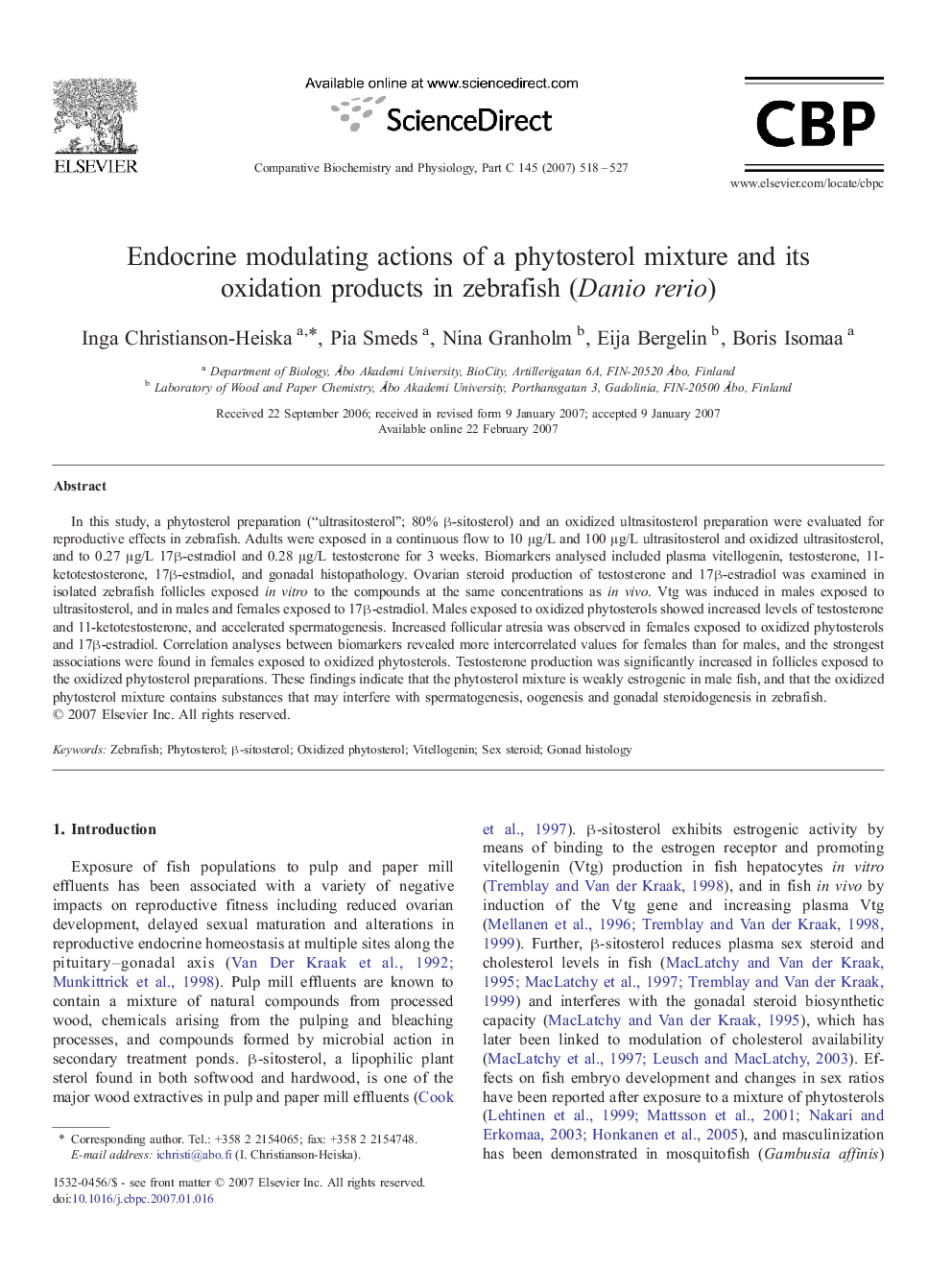| Article ID | Journal | Published Year | Pages | File Type |
|---|---|---|---|---|
| 1978241 | Comparative Biochemistry and Physiology Part C: Toxicology & Pharmacology | 2007 | 10 Pages |
In this study, a phytosterol preparation (“ultrasitosterol”; 80% β-sitosterol) and an oxidized ultrasitosterol preparation were evaluated for reproductive effects in zebrafish. Adults were exposed in a continuous flow to 10 μg/L and 100 μg/L ultrasitosterol and oxidized ultrasitosterol, and to 0.27 μg/L 17β-estradiol and 0.28 μg/L testosterone for 3 weeks. Biomarkers analysed included plasma vitellogenin, testosterone, 11-ketotestosterone, 17β-estradiol, and gonadal histopathology. Ovarian steroid production of testosterone and 17β-estradiol was examined in isolated zebrafish follicles exposed in vitro to the compounds at the same concentrations as in vivo. Vtg was induced in males exposed to ultrasitosterol, and in males and females exposed to 17β-estradiol. Males exposed to oxidized phytosterols showed increased levels of testosterone and 11-ketotestosterone, and accelerated spermatogenesis. Increased follicular atresia was observed in females exposed to oxidized phytosterols and 17β-estradiol. Correlation analyses between biomarkers revealed more intercorrelated values for females than for males, and the strongest associations were found in females exposed to oxidized phytosterols. Testosterone production was significantly increased in follicles exposed to the oxidized phytosterol preparations. These findings indicate that the phytosterol mixture is weakly estrogenic in male fish, and that the oxidized phytosterol mixture contains substances that may interfere with spermatogenesis, oogenesis and gonadal steroidogenesis in zebrafish.
